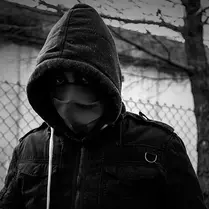
Aug 1, 2021


Jun 11, 2021
What?
In 2020, Crest conducted groundbreaking research into the exploitation of looked after children within county lines. This project widens the focus onto all young people involved in county drug lines, addressing two of the most significant challenges facing police forces and their local authority partners:
Firstly, how is a decision reached on whether a young person identified as participating in county lines by the police is a victim, a willing participant or a groomer?
Secondly, when a young person is identified as a victim, what are their outcomes over time and how are those outcomes shaped by the safeguarding responses they receive from statutory authorities?
Why?
Young people involved in county lines often have complex and intersecting vulnerabilities. A London-based county lines intervention programme ‘Rescue and Response’ shows that 59% of their young people had a social care status, 43% of children were not in education, and 10% had at least one disability [1]. There is growing consensus that these vulnerabilities are contributing to young people being groomed, exploited and coerced into criminal activity.
The National Referral Mechanism (NRM) is used to identify victims of trafficking, and as a result it has become the primary method used to identify victims of county lines. Section 45 of the Modern Slavery Act 2015 ensures that identified victims of trafficking cannot be punished for crimes they were coerced into committing. However, there is still no consensus on how to decide whether the young people identified in county lines are victims, willing participants, or groomers themselves. The issue is complicated by the overlap between victimisation and offending for many of these young people, who may view exploiting others as the only route out of exploitation.
After a spike in the use of the NRM and the Section 45 defence - often labelled as the ‘county lines defence’ - concerns have been raised that these tools do not work to protect victims of trafficking or the general public [2]. Widespread misunderstandings of the processes are leading to the Section 45 defence being applied too late, inconsistently, and without sufficient intervention to safeguard a victim from their trafficker. The average age profile (15-17) of those involved in county lines exacerbates these challenges, with young people caught in the transition from child to adult services.
Police forces report seeing children and young people involved in county lines trapped in a cycle of exploitation, and often exploiting others. However, the lack of data on outcomes for these young people over time makes this hypothesis difficult to analyse. Crest’s research seeks to address this data gap, matching police and local authority records to understand patterns of vulnerability and exploitation - and identify opportunities to break the cycle.
What did we look at?
The project was completed in four phases.
Phase 1: Reviewing existing literature and hosting national and local workshops to identify key arguments around the appropriate enforcement approach for young people caught up in county lines. Crest hosted a national stakeholder roundtable, chaired by Independent Anti-Slavery Commissioner Dame Sara Thornton, and a workshop with local stakeholders from our deep dive areas including representatives from the police forces and local authorities.
Phase 2: ‘Deep dives’ into a sample of police operations tackling county lines involving young people within two force areas. Crest will match case-level data records between home force, county force, and children’s social care in home local authorities and develop case studies tracking the progress of individual young people.
Phase 3: Bring together lessons learned from phases 1 and 2 with representatives from our two deep dive police force areas and participants attending our initial workshops. This will include identifying opportunities to determine a young person’s victimhood or culpability in county lines.
Phase 4: will synthesise findings from across the project into a final report presenting recommendations to national and local players.
Footnotes
Rescue and Response County Lines Project (2020), Year 2 Strategic Assessment (September) 2020
Independent Anti-Slavery Commissioner (2020), The Modern Slavery Act 2015 Statutory Defence: A Call for Evidence